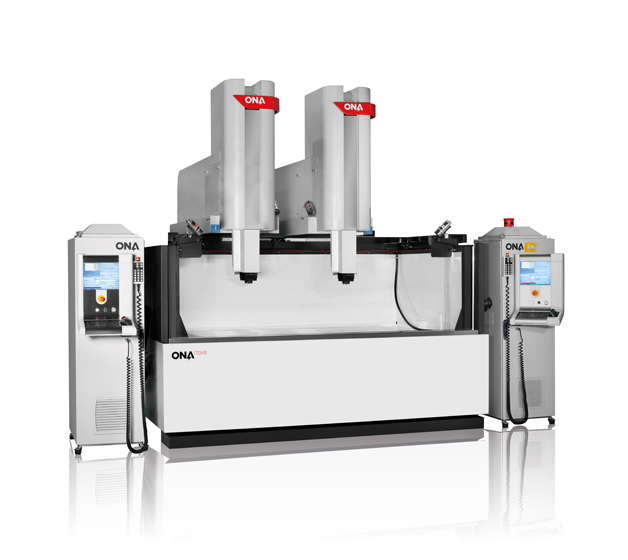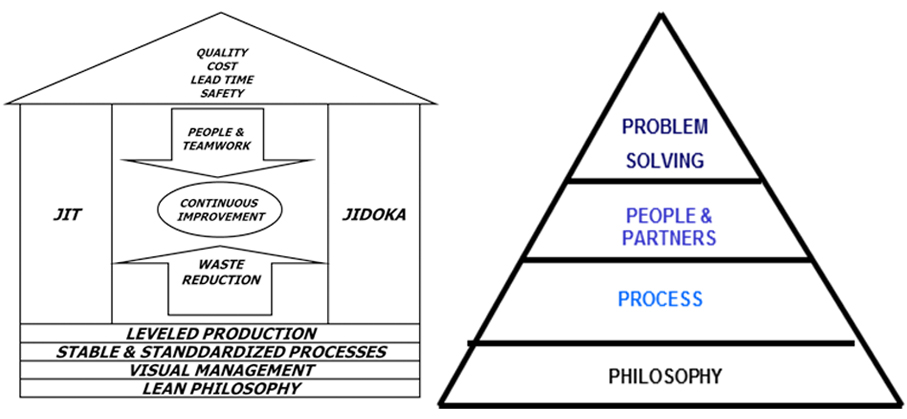 11 October, 2017
11 October, 2017The LEAN philosophy proposal, which is founded on a long-term vision, fits in with the ONA philosophy, proven over its more than 60 years of supplying electroerosion solutions, which has led them to be leaders in large and special machines, and to be the operational manufacturers with the longest track record in the sector (EDM).
Usually when LEAN model is mentioned what springs to mind is Toyota, automotive industry, high volumes,…
However, a look at two of the best-known graphic depictions of the model (the TPS House and the 4P Pyramid by Jeffrey Liker) shows that the first thing remarked is a search for a durable and sustainable management model.

This approach matches ONA's philosophy, as demonstrated over more than 60 years of supplying EDM solutions, which has enabled it to lead the field in large and special machines and to be the oldest active manufacturer in the EDM sector.
Over the foundations of LEAN philosophy there are a lot of concepts and tools such as visual management, standardization, JIT,… that serve as references for decision-making but need to be interpreted and adjusted to the needs of each company and each sector. For instance, standardization will not mean the same thing to an automotive sector manufacturer as it will to a company in the high-mix and custom engineered manufacturing environment.
Focusing on high-mix and custom engineered manufacturing environments, in recent years there is a model which is taken more and more importance. It is compatible with LEAN and indeed coincides with it on many points, and makes a significantly radical proposal. This model is QRM (Quick Response Manufacturing), by Rajan Suri.
The main metric in QRM is the MCT (Manufacturing Critical-Path Time), which outweighs other metrics widely used in conventional management, such as resource utilization or cost. The arguments in favour of MCT highlight that rapid response in high-mix and customized products is a winning factor when compared to high volumes in low-cost countries (Two winning order – Two qualifying order criteria framework, by Terry Hill). It is argued that conventional metrics only measure execution costs and not those arising from the long lead times up to delivery to customers (stocks, re-planning, management of emergencies, low levels of flexibility,…), which tend to be hidden under general overheads. It is also argued that reducing lead times, even when increasing execution costs in some cases, will raise profits by increasing market share and reducing overheads costs.
QRM is based on four key concepts:
ONA Operations Management Project
Using LEAN philosophy adjusted to high-mix and custom engineered manufacturing environments, and including the contributions from QRM, ONA has been building up a new operations system (ONA OS).
Based on a growth strategy and focus on large and special machines, five stages were defined to use as a route map for prioritising resources. These stages have been used as a guideline and in a flexible way, in such a way that projects from other stages have been brought forward when it has been considered suitable and consistent with the whole project (i.e. the use of tablets to access to documentation from the shop floor).
STAGE 1: Development of the LANTEGI concept (similar to QRM cells) as the core of the system, and strategy of increasing capacity.
Although being basically at the end of stage 2, the evolution in some metrics over the last five years can be mentioned:
In conclusion, it can be mentioned that LEAN and QRM systems provide guidelines that each company should adjust to its own sector and strategy, and which are applicable to high-mix and custom engineered manufacturing environments typically found in our machine tool sector.
Subscribe to our newsletter. Just insert your e-mail and you will receive the latest news.